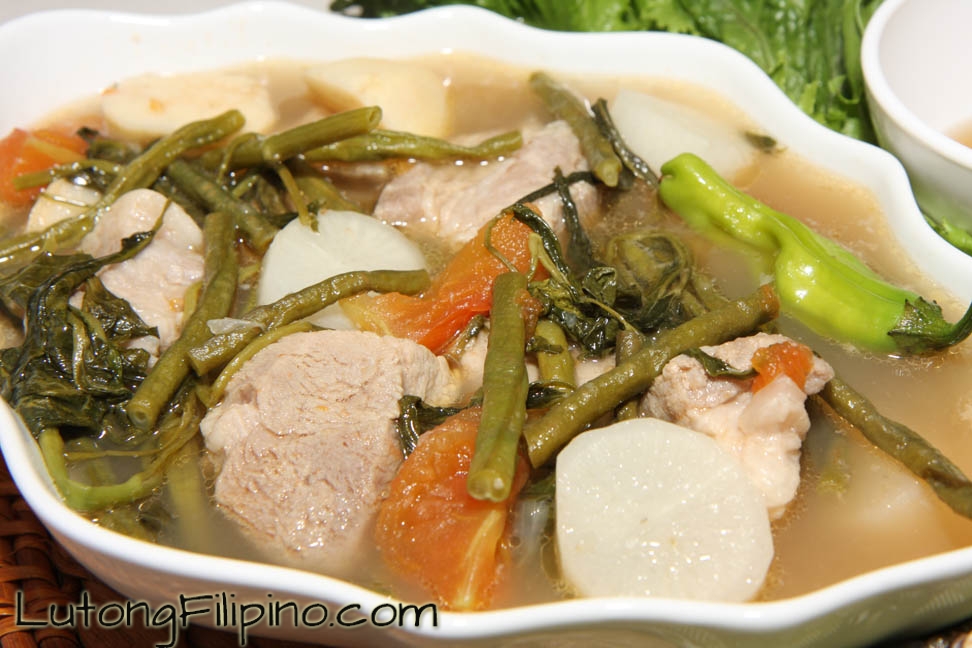Pork Sinigang is a native cuisine in the Philippines – particularly known for its sour taste. If you want to taste one famous cuisine among locals then this must be one of the first cuisines you must try.
Traditionally, sinigang is tamarind-based but calamansi, unripe mango, guava and bilimbi may also be used as souring agent. There are also seasoning powder available in the market that may be used as an alternative if natural sources prove to be challenging to find but if you already have the natural sources on your backyard be our guest!
If pork is to be used, the main parts included in the soup are pork neck bones, spare ribs, pork belly and even baby back ribs. The bony parts of the pig are usually preferred by many when cooking this dish.
The meat is usually stewed along with spices such as onions and tomatoes as well as its souring agent – tamarind for example. However, other ingredients may also be added to further enhance the taste such as okra, gabi, kangkong, eggplant, sitaw and labanos. These ingredients are often added to create another version of the traditional sinigang.
[yumprint-recipe id=’2′]

Leave a Reply